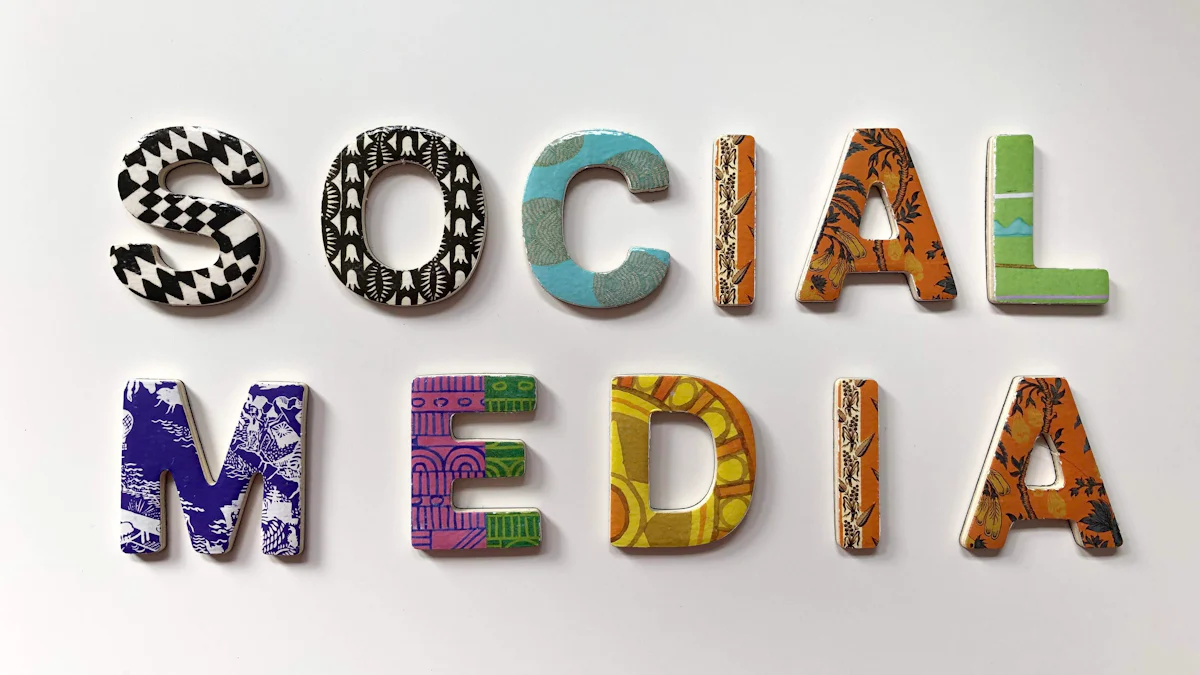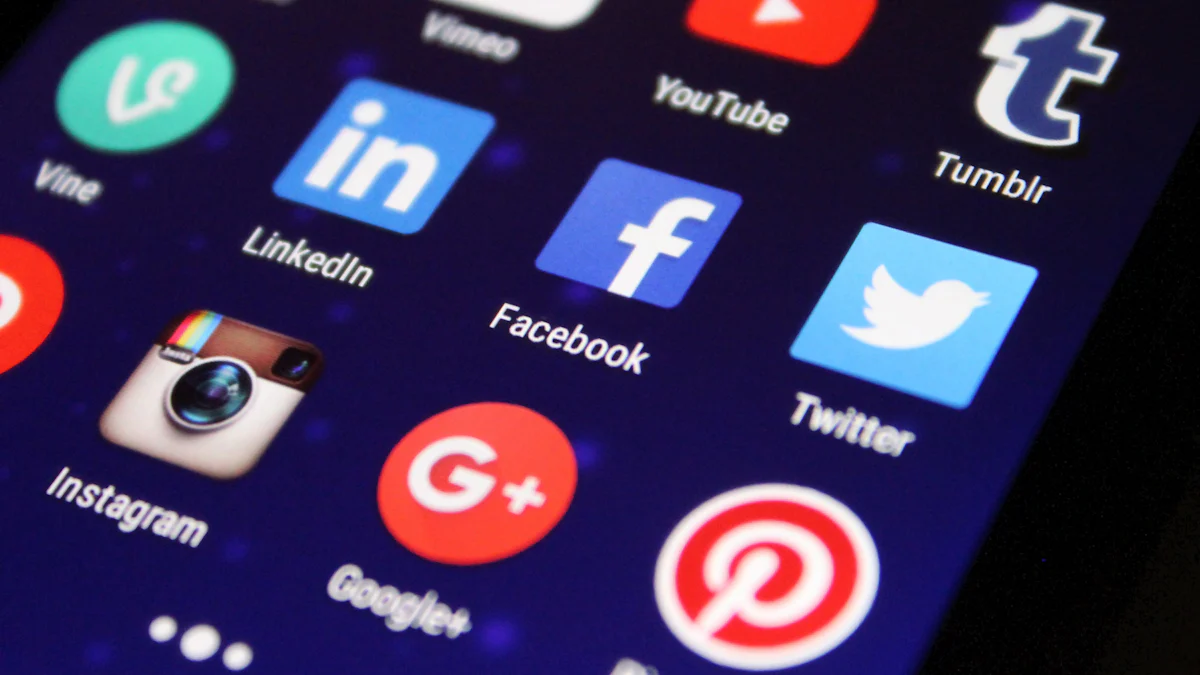How to Implement Social Media Whitelisting Effectively

Whitelisting social media is a powerful tool in influencer marketing. It allows brands to run ads directly from an influencer's account, enhancing authenticity and engagement. This strategy can boost your brand's visibility by tapping into the influencer's trusted audience. Studies show that whitelisting social media often results in higher engagement rates, as ads appear more organic. For instance, Instagram nano-influencers achieve engagement rates of 6.23%, significantly higher than traditional ads. By leveraging whitelisting social media, you can optimize ad performance and reach new audiences, ultimately driving better results for your marketing efforts.
Understanding Social Media Whitelisting
What is Social Media Whitelisting?
Social media whitelisting is a strategic approach in digital marketing. It involves a partnership between brands and influencers, where influencers grant brands advertising permissions on their social media accounts. This allows brands to run ads directly through the influencer's profile. By doing so, brands can leverage the influencer's established audience and credibility. This method enhances the authenticity of ads, making them appear more organic to consumers. As a result, these ads often outperform traditional advertising methods.
Influencer whitelisting offers a unique advantage. It enables brands to tap into the influencer's audience, which is already engaged and trusting. This strategy not only boosts the reach of marketing campaigns but also enhances their impact. By promoting content through trusted voices, brands can connect with audiences in a more genuine way.
Why is Whitelisting Important for Brands and Influencers?
Whitelisting holds significant importance for both brands and influencers. For brands, it optimizes influencer content to achieve the best results. While organic engagement builds brand awareness, combining it with paid social strategies can convert interested audience members into paying customers. This dual approach maximizes the effectiveness of marketing efforts.
For influencers, whitelisting provides an opportunity to gain more exposure. By allowing brands to promote content through their accounts, influencers can increase their follower base. This collaboration is mutually beneficial. Brands benefit from the influencer's reach and authenticity, while influencers enjoy increased visibility and engagement.
Multiple Experts in influencer marketing emphasize that whitelisting is a growing strategy. It enhances influencer marketing campaigns by allowing brands to leverage influencer content and audiences. This results in better performance and wider reach.
Benefits of Social Media Whitelisting

Advantages for Brands
When you engage in influencer whitelisting, your brand gains several advantages. First, this strategy allows you to reach a broader audience. By running ads through an influencer's account, you tap into their established follower base. This approach often proves more effective than traditional social media ads, enhancing engagement rates and building consumer trust.
Moreover, whitelisting social media helps you run targeted ads. You can tailor your campaigns to specific demographics, ensuring that your message reaches the right people. This precision in targeting not only generates buzz around your products or services but also improves lead quality. As a result, you maximize your return on investment (ROI) on ad spend.
Additionally, influencer whitelisting optimizes influencer-generated content for better results. By leveraging the influencer's credibility, your ads appear more authentic and organic. This authenticity resonates with audiences, leading to higher engagement and conversion rates. Ultimately, whitelisting scales your influencer marketing campaigns, allowing you to achieve your marketing goals more efficiently.
Advantages for Influencers
Influencer whitelisting offers significant benefits for influencers as well. By partnering with brands, you gain increased exposure and visibility. When brands promote content through your account, your follower base expands, attracting new audiences who are interested in your niche.
Furthermore, this collaboration enhances your credibility and authority in your field. As brands choose to associate with you, it signals to your audience that you are a trusted and influential figure. This trust translates into higher engagement rates and a more loyal following.
In addition, influencer whitelisting provides you with opportunities for monetization. Brands often compensate influencers for granting advertising permissions, creating an additional revenue stream. This financial incentive, coupled with the growth in your audience, makes whitelisting a mutually beneficial arrangement.
Step-by-Step Guide to Implementing Whitelisting
Implementing whitelisting social media can enhance your marketing strategy by allowing you to run ads directly through an influencer's account. This guide will walk you through the necessary steps to set up whitelisting on Facebook and Instagram.
Prerequisites for Whitelisting
Before you begin, ensure you have the following:
- Facebook Business Manager Account: Both you and the influencer need accounts.
- Business Manager ID: Obtain the influencer's ID to invite them as a partner.
- Creator or Business Account: The influencer should have their social media accounts set up as business or creator accounts to maximize monetization opportunities.
Facebook Whitelisting Setup
To whitelist an influencer post on Facebook, follow these steps:
Accessing Business Manager
- Log into Facebook Business Manager: Use your credentials to access your account.
- Navigate to Business Settings: Find this option in the main menu.
Requesting Whitelisting Permissions
- Add a Partner: Enter the influencer's Business Manager ID to invite them.
- Assign Assets and Permissions: Select the appropriate Facebook Page and assign necessary permissions for running ads.
- Confirm the Partnership: Ensure both parties have linked their accounts to the desired Facebook page.
Instagram Whitelisting Setup
Setting up whitelisting on Instagram involves similar steps:
Linking Instagram Accounts
- Connect Instagram to Facebook Business Manager: Ensure the influencer's Instagram account is linked to their Facebook Business Manager.
- Verify Account Type: Confirm that the influencer's Instagram account is set as a business or creator account.
Managing Permissions
- Request Access: Send a request to the influencer to grant advertising permissions.
- Assign Permissions: Once granted, assign the necessary permissions to run ads through the influencer's Instagram handle.
By following these steps, you can effectively implement influencer whitelisting, allowing you to run targeted social media ads that leverage the influencer's audience and credibility. This approach not only enhances the authenticity of your ads but also optimizes your marketing efforts for better results.
Tools to Simplify Whitelisting

Navigating the world of influencer whitelisting can be complex, but using the right tools can streamline the process. These tools not only simplify the setup but also enhance the effectiveness of your social media ads.
Recommended Tools and Platforms
-
Application Control Plus: This on-premises solution automates the application whitelisting process. It combines Least Privilege and Zero Trust principles, ensuring that only authorized access is granted to applications and their related privileges. This tool is ideal for organizations looking to maintain strict control over their digital assets.
-
Trellix Application and Change Control: Formerly known as McAfee Application Control, this tool offers endpoint protection by blocking all software not included in the allow-list. It scans each endpoint to generate a comprehensive list of installed software, making it easier for administrators to manage whitelisted ads effectively.
-
Application Whitelisting Tool: This tool enhances security by preventing unauthorized software execution. It defends against malware, reduces the attack surface, and enforces compliance and policy. It's a crucial element for safeguarding devices and maintaining a balance between security standards and productivity.
How These Tools Enhance the Whitelisting Process
-
Streamlined Management: Tools like Application Control Plus automate the whitelisting process, reducing the manual effort required. This automation allows you to focus on creating engaging content for your whitelisted posts rather than getting bogged down in technical details.
-
Enhanced Security: By using tools such as Trellix Application and Change Control, you can ensure that your social media ads are protected from unauthorized access. This protection is vital for maintaining the integrity of your campaigns and ensuring that your ads reach the intended audience without interference.
-
Improved Compliance: The Application Whitelisting Tool helps enforce compliance with industry standards and policies. This enforcement is crucial for brands that need to adhere to strict regulations while running whitelisted ads. By ensuring compliance, you can avoid potential legal issues and focus on achieving your marketing goals.
By leveraging these tools, you can simplify the whitelisting process and enhance the effectiveness of your influencer marketing campaigns. These solutions not only provide security and compliance but also allow you to maximize the impact of your social media ads.
Best Practices for Effective Whitelisting
Implementing whitelisting social media effectively requires a strategic approach. By following best practices, you can maximize the benefits of influencer whitelisting and enhance your marketing efforts.
Selecting the Right Influencers
Choosing the right influencers is crucial for successful whitelisting. You should look for influencers whose audience aligns with your brand values and target market. This alignment ensures that your ads resonate with the audience, leading to higher engagement and conversion rates.
- Audience Analysis: Evaluate the influencer's audience demographics, interests, and engagement levels. This analysis helps you determine if their followers match your target audience.
- Content Quality: Assess the quality and style of the influencer's content. High-quality content enhances the authenticity of your ads.
- Reputation and Credibility: Consider the influencer's reputation in their niche. A credible influencer can boost your brand's trustworthiness.
Survey Results: Organizations that prioritize selecting the right influencers report higher engagement and ROI from their whitelisting efforts.
Creating and Targeting Custom Audiences
Creating and targeting custom audiences is essential for optimizing your whitelisting campaigns. By tailoring your ads to specific audience segments, you can increase their relevance and effectiveness.
- Data Utilization: Use data from previous campaigns to identify audience segments that respond well to your ads. This data-driven approach allows you to refine your targeting strategy.
- Lookalike Audiences: Create lookalike audiences based on your existing customer base. These audiences share similar characteristics with your current customers, increasing the likelihood of engagement.
- A/B Testing: Conduct A/B tests to compare different audience segments and ad creatives. Testing helps you identify the most effective combinations for your campaigns.
Monitoring and Analyzing Performance
Monitoring and analyzing the performance of your whitelisting campaigns is vital for continuous improvement. By tracking key metrics, you can make informed decisions and optimize your strategy.
- Performance Metrics: Track metrics such as engagement rates, click-through rates, and conversion rates. These metrics provide insights into the effectiveness of your campaigns.
- Feedback Loop: Establish a feedback loop with influencers to gather insights on audience reactions. This collaboration helps you refine your approach and improve future campaigns.
- Iterative Improvements: Use the data collected to make iterative improvements to your campaigns. Continuous optimization ensures that your whitelisting efforts remain effective and relevant.
By following these best practices, you can enhance the effectiveness of your whitelisting social media campaigns. Selecting the right influencers, targeting custom audiences, and monitoring performance are key steps in achieving successful influencer whitelisting.
Common Challenges and How to Overcome Them
Navigating the world of influencer whitelisting presents several challenges. Understanding these obstacles and knowing how to address them can significantly enhance your marketing efforts.
Addressing Privacy Concerns
Privacy concerns often arise when implementing whitelisting strategies. You must handle personal information with care to maintain trust with influencers and their audiences. The New York Privacy Act sets strict rules about managing consumers' personal information. This legislation impacts companies in New York state and provides new rights to individuals. To address privacy concerns:
-
Transparency: Clearly communicate with influencers about how you will use their data. Transparency builds trust and ensures that both parties understand the terms of the partnership.
-
Data Protection: Implement robust data protection measures. Ensure that any personal information collected is stored securely and used only for the intended purposes.
-
Compliance: Stay informed about privacy laws like the New York Privacy Act. Compliance with these regulations protects your brand from legal issues and enhances your reputation.
Ensuring Compliance with Platform Policies
Social media platforms have specific policies regarding whitelisting. Non-compliance can lead to penalties or account suspensions. To ensure compliance:
-
Familiarize Yourself with Policies: Regularly review the terms and conditions of platforms like Facebook and Instagram. Understanding these guidelines helps you avoid violations.
-
Training and Education: Educate your team about platform policies. Training ensures that everyone involved in the whitelisting process understands the rules and follows them.
-
Regular Audits: Conduct regular audits of your whitelisting campaigns. Audits help identify any areas of non-compliance and allow you to make necessary adjustments.
By addressing privacy concerns and ensuring compliance with platform policies, you can overcome common challenges in influencer whitelisting. These steps not only protect your brand but also enhance the effectiveness of your marketing campaigns.
Incorporating whitelisting social media into your marketing strategy can significantly enhance your brand's visibility and engagement. By leveraging influencer whitelisting, you tap into trusted audiences, creating authentic connections that traditional ads often miss. This approach not only optimizes ad performance but also strengthens your brand's credibility. As you integrate whitelisting, remember its potential to streamline resource management and improve security. Embrace this proactive strategy to safeguard your marketing efforts and achieve superior results. Start implementing whitelisting today to unlock new opportunities for growth and success.
FAQ
What is social media whitelisting?
Social media whitelisting allows brands to run ads directly from an influencer's account. You gain access to the influencer's audience, enhancing the authenticity and reach of your ads. This strategy often results in higher engagement rates compared to traditional advertising methods.
How do I know if I'm whitelisting?
You are whitelisting when you have obtained advertising permissions from an influencer to run ads through their social media account. This involves setting up a partnership through platforms like Facebook Business Manager, where both parties link their accounts for ad management.
Why should I consider whitelisting for my brand?
Whitelisting offers several benefits. It allows you to reach a broader audience by leveraging the influencer's established follower base. Your ads appear more authentic, leading to higher engagement and conversion rates. This strategy also enables precise targeting, maximizing your return on investment.
How can influencers benefit from whitelisting?
Influencers gain increased exposure and visibility when brands promote content through their accounts. This collaboration enhances their credibility and authority, attracting new followers. Additionally, influencers often receive compensation for granting advertising permissions, creating an additional revenue stream.
What are the prerequisites for setting up whitelisting?
Before setting up whitelisting, ensure you have a Facebook Business Manager account. Both you and the influencer need to have business or creator accounts on social media platforms. Obtain the influencer's Business Manager ID to invite them as a partner.
How do I set up whitelisting on Facebook?
To set up whitelisting on Facebook, log into Facebook Business Manager and navigate to Business Settings. Add the influencer as a partner by entering their Business Manager ID. Assign the necessary permissions for running ads through their account.
What tools can simplify the whitelisting process?
Several tools can streamline whitelisting. Application Control Plus automates the process, reducing manual effort. Trellix Application and Change Control offers enhanced security by blocking unauthorized software. These tools help manage whitelisted ads effectively and ensure compliance with industry standards.
How do I select the right influencers for whitelisting?
Choose influencers whose audience aligns with your brand values and target market. Evaluate their audience demographics, content quality, and reputation. This alignment ensures that your ads resonate with the audience, leading to higher engagement and conversion rates.
What are common challenges in whitelisting, and how can I overcome them?
Common challenges include privacy concerns and compliance with platform policies. Address privacy concerns by being transparent about data usage and implementing robust data protection measures. Ensure compliance by familiarizing yourself with platform policies and conducting regular audits of your campaigns.
How can I monitor the performance of my whitelisting campaigns?
Track key metrics such as engagement rates, click-through rates, and conversion rates. Establish a feedback loop with influencers to gather insights on audience reactions. Use this data to make iterative improvements to your campaigns, ensuring they remain effective and relevant.
See Also
Grasping The Concept Of Social Media Whitelisting
Expert Techniques For Social Media Whitelisting Success
Defining The Basics Of Social Media Whitelisting
